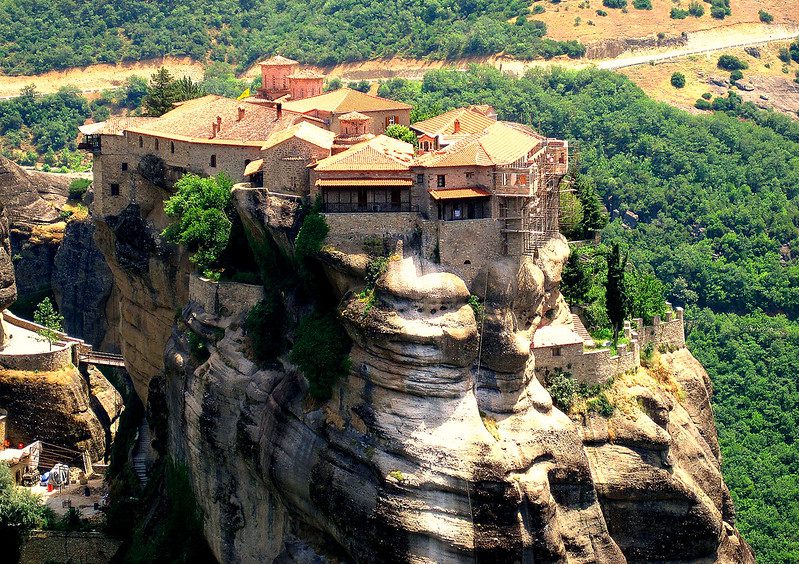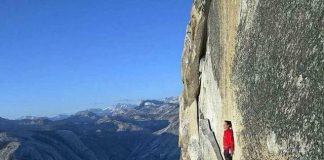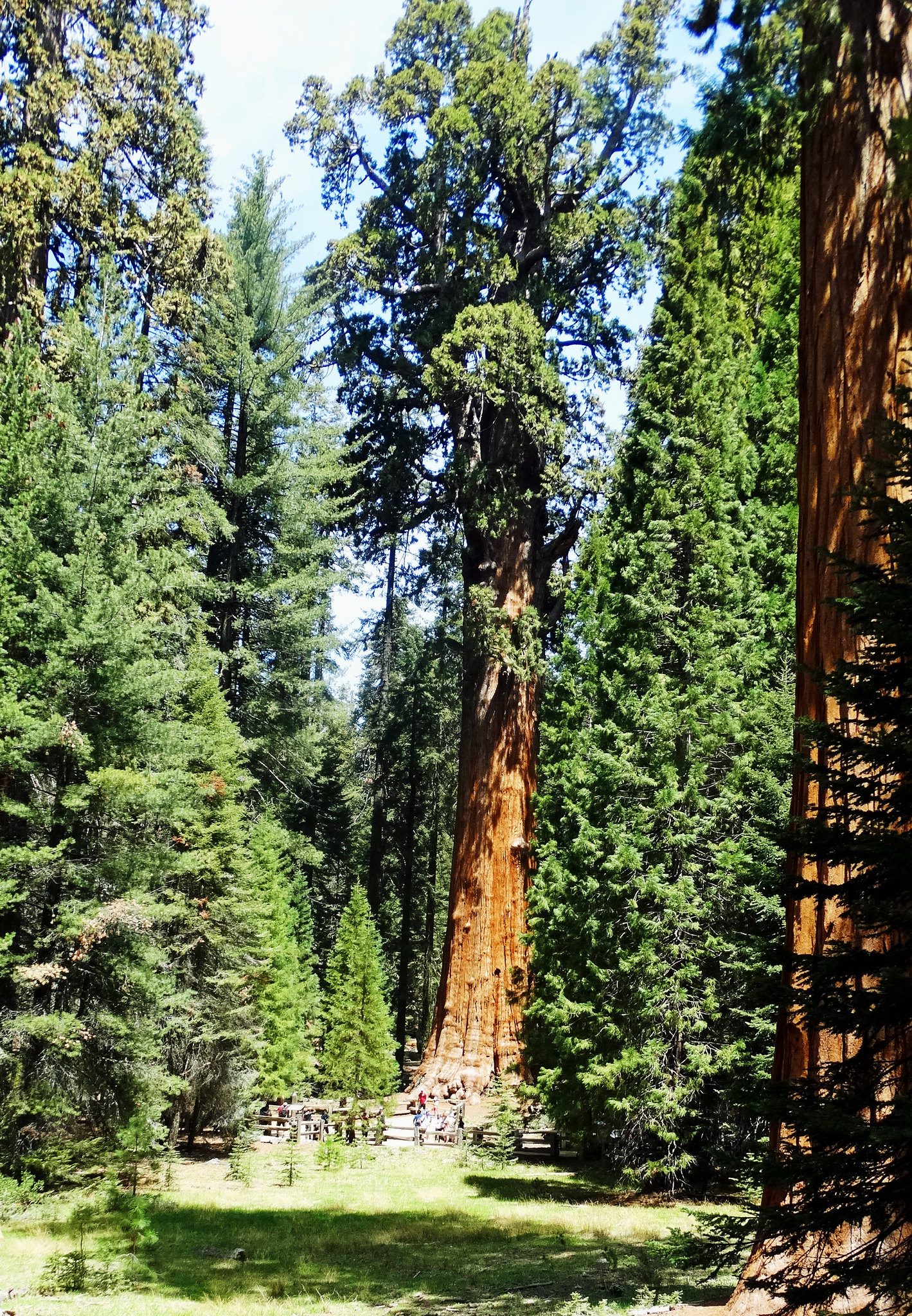
The General Sherman Tree – The Worlds Largest Tree
General Sherman is an enormous sequoia ( Sequoiadendron Giganteum), a tree found in the Giant Forest Sequoia National Park (read more about this park further below), Tulare County, in the U.S. State of California.
It is the largest single-stem living tree on Earth, according to volume. It’s estimated to be between 2,300 and 2,700 years old. The General Sherman Tree is the world’s largest tree. The tree gets its name from General William Tecumseh Sherman, who was a Civil War general.

Although General Sherman is currently the most giant living tree, it has not been historically the largest. The Lindsey Creek tree, with over 90,000 cubic feet (2,500 cubic meters) nearly twice the volume of General Sherman, was reported to have been felled by a storm in 1905.
A more immense coast redwood, Crannell Creek Giant (Sequoia Sempervirens), was cut down in the mid-1940s near Trinidad. It is believed to be 15-25% larger than General Sherman’s tree.
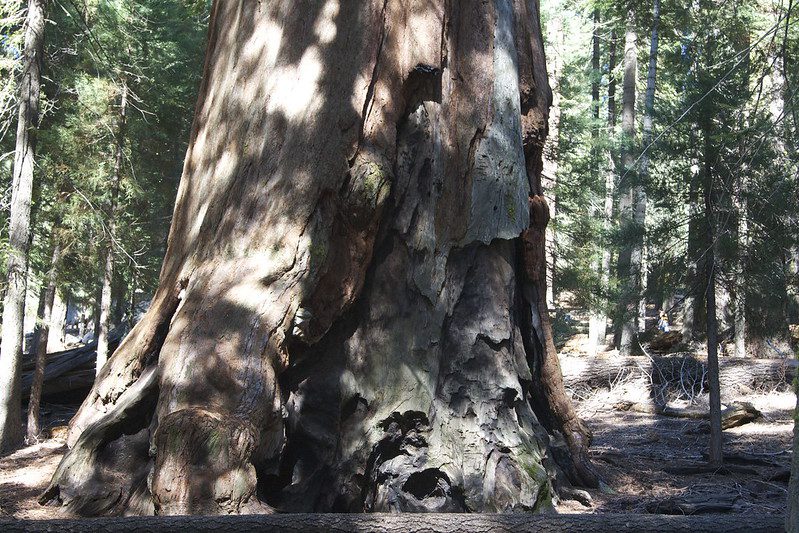
History Of The General Sherman Tree
General Sherman was named after William Tecumseh Sherman, an American Civil War general. Official stories may be exaggerated. According to one account, the tree was named by James Wolverton in 1879. Wolverton had been a lieutenant in Sherman’s 9th Indiana Cavalry.
The establishment of Sequoia National Park in 1892 led to the dissolution of the community. The land was finally taken under control by the Kaweah Colony in 1886. This utopian socialist community’s economy was based on logging, and it came seven years later.
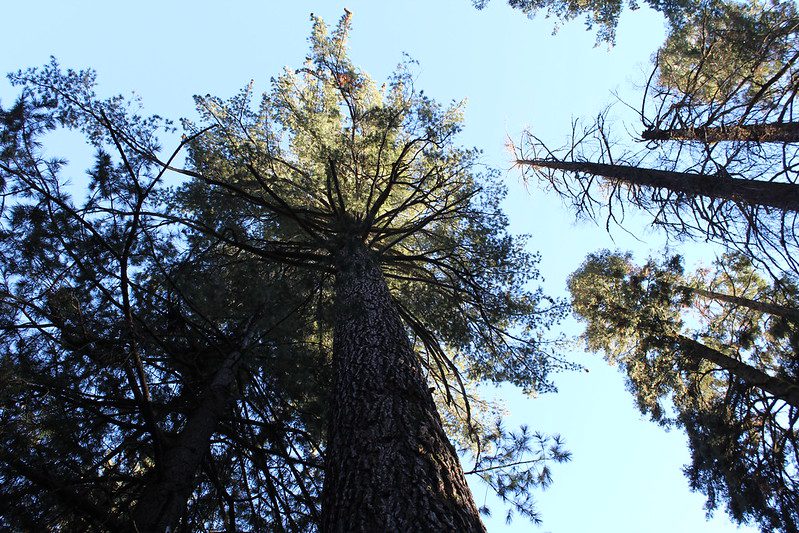
They renamed it Karl Marx’s tree after Sherman’s pivotal role in the Indian Wars and the forced relocation of Native American tribes. However, the tree was renamed back to its original name.
After comparing General Grant with General Sherman, General Sherman was deemed the world’s largest tree. This process led to the wood volume being widely accepted as the standard for measuring and comparing different tree sizes.
In older photos, the largest branch of the tree, which is seen most often as an “L”, or golf-club shape that protrudes from the trunk about a quarter of its length, broke off in January 2006.
The branch, which was larger than most tree trunks and had a diameter of over 2m (6.6 feet) and a length of over 30m (98ft), smashed part of the perimeter fence and damaged the walkway.
The incident occurred without witnesses. It is unlikely that the breakage indicates any abnormalities in the tree’s condition. In fact, it may be a natural defence mechanism against adverse weather conditions.
To protect the tree from the KNP complex fires, the tree was wrapped with aluminium foil in September 2021.
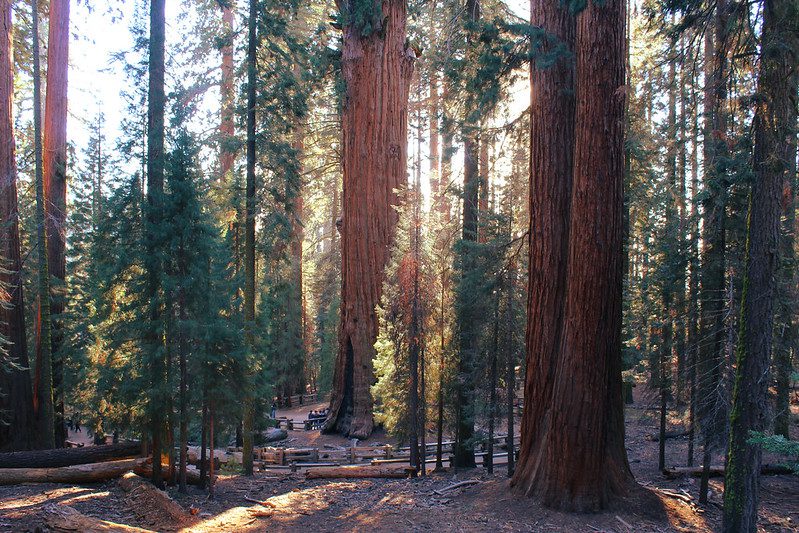
Dimensions
Although it is the largest tree in existence, it is not the tallest. The General Sherman Tree isn’t the tallest living tree (that honour goes to the Hyperion tree, a Coast redwood), and it is not the widest. (both the largest baobab and cypress have larger diameters) nor the oldest living tree (that distinction goes to the Great Basin bristlecone pine).
It stands at 83.8 meters (275 feet) in height, has a diameter of 7.7m (25ft), has an estimated bole volume 3 of 1,487m (52.5113 cu ft), is estimated to be between 2,300 and 2,700 years old, and is still among the longest-lived, tallest and widest trees on the planet.
Sequoia National Park, California, USA
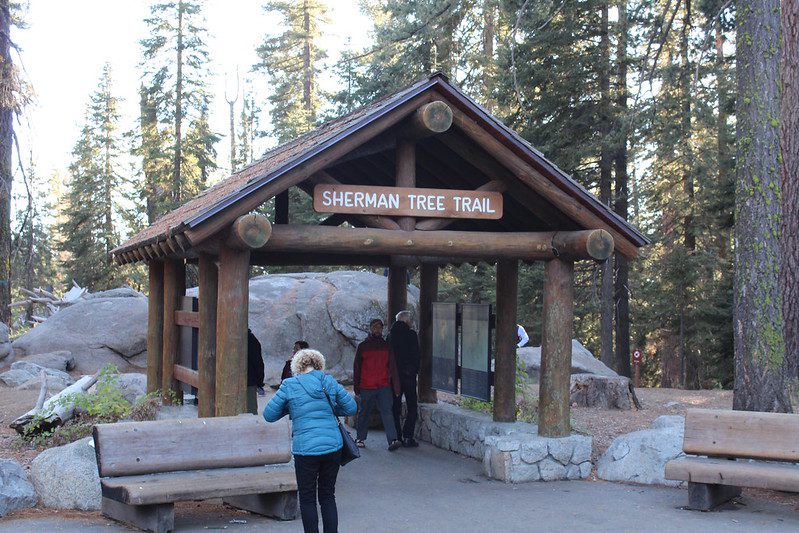
Sequoia National Park is a national park in California’s southern Sierra Nevada east. On September 25, 1890, it was created to protect 404.064 acres (163,519 ha; 1,635km 2) of forested mountainous terrain.
The park has a vertical elevation of almost 13,000 feet (4,000m), and Mount Whitney is the highest point in the United States at 14,505 feet (4 421 m). It is located south of Kings Canyon National Park, which is also contiguous.
Both parks are managed by the National Park Service as the Sequoia National Parks and Kings Canyon National Parks. In 1976, UNESCO designated these areas as Sequoia-Kings Canyon Biosphere Reserve.
It is known for its giant sequoias, including the General Sherman Tree, the world’s largest tree by volume. Five of the ten biggest trees in the world are found in the Giant Forest. The General Sherman Tree can be found in this forest.
The General’s Highway connects the Giant Forest to Kings Canyon National Park’s General Grant Grove. This is where you will find the General Grant tree and other giant sequoias. The park’s giant sequoias trees are part of 202.430 acres (31.6 mi; 81.921 ha; 819km) of old-growth forests shared by Sequoia National Parks and Kings Canyon National Parks.
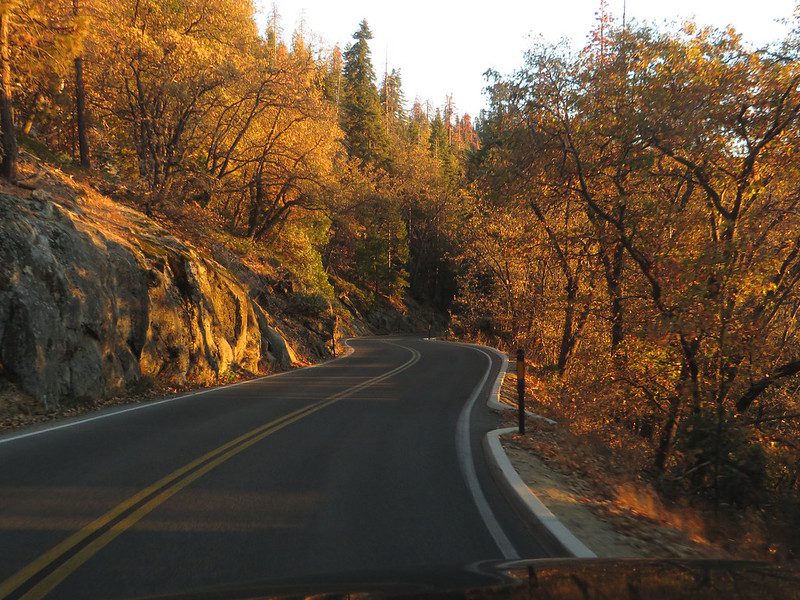
These parks preserve the landscape of the southern Sierra Nevada before the Euro-American settlement.
Due to the wildfire at Sequoia Complex, the national park was closed partially in September 2020.
Front Country
Sequoia National Park is accessed from the southern entrance, near Three Rivers at Ash Mountain at 1,700 feet (520m) elevation. Lower elevations surrounding Ash Mountain are home to the California Foothills ecosystem.
This includes blue oak woodlands and foothills chaparral. It also contains grasslands, yucca, and steep, mild river valleys. Seasonal changes create a changing landscape in the foothills.
Hot summer results in an arid landscape, while spring and fall rains bring lush greenery and blue oak woodlands to the area. More rarely, the reclusive mountain lions and Pacific fisher can be seen here. In this park, the last California grizzly was found in 1922 (at Horse Corral Meadow).
The California Black Oak is a vital transition species between chaparral forest and conifer forest at higher elevations.
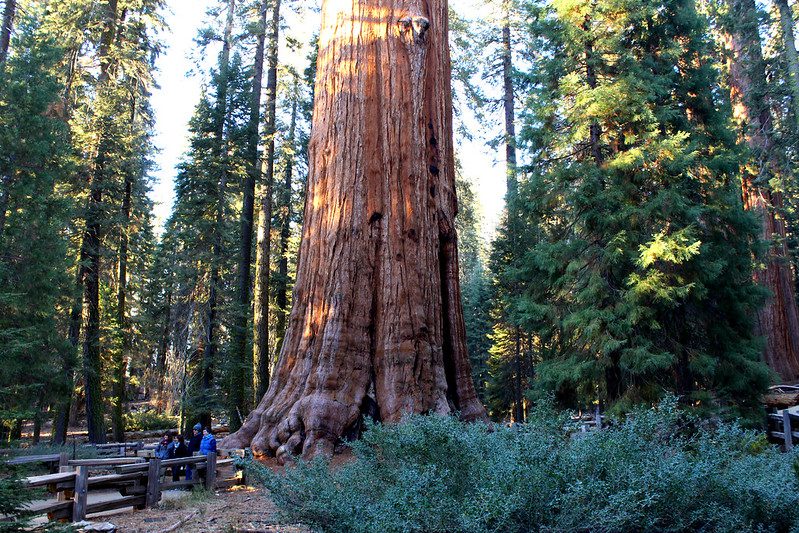
The landscape changes to a coniferous forest-dominated montane forest at higher elevations, ranging between 5,500 and 9,900 feet (1,700 and 2,700m).
You will find Ponderosa and Jeffrey trees, sugar and lodgepole pine trees, as well as abundant red and white fir. The giant sequoia trees are also found here, which are the largest single-stem living trees on Earth.
Spring and summer snowmelts can sometimes form meadows between the trees. Visitors often spot mule deer and Douglas squirrels in this area.
They also sometimes enter unattended cars to eat food left behind by careless visitors. Plans are underway to bring back the bighorn sheep to the park.

Backcountry
The High Sierra Trail, located above Hamilton Lake, crosses the Great Western Divide.
The park’s vast majority is wilderness and roadless. No road crosses the Sierra Nevada in its boundaries. 84% of Sequoia-Kings Canyon National Parks have been designated wilderness. It can be accessed only by foot or on horseback.
The majority of the park was declared Sequoia King Canyon Wilderness by 1984, while the southwest section was designated John Krebs Wilderness by 2009.
The Sequoia backcountry is home to a wide range of high-alpine wonders. The backcountry covers the High Sierra’s highest elevation region. It includes Mount Whitney at the eastern border of Sequoia National Park.
Accessible via the High Sierra Trail from the Giant Forest, it also contains the High Sierra Trail. This 35-mile (56km) trail takes you through about 10 miles (16km) of montane forest to reach Bearpaw Meadow, a resort in the backcountry, just short of the Great Western Divide.

Mount Whitney
Continue on the High Sierra Trail via Kaweah Gap over the Great Western Divide. One passes through the Kaweah River Drainage with V-shaped river valleys and then into the Kern River drainage.
Here, an ancient fault line has helped glaciers create a U-shaped canyon that is nearly straight for almost 20 miles (32km) in the recent ice age. The Kern Canyon hot spring is a popular stop for tired backpackers and can be found at least two days from the nearest road.
The trail climbs over 8,000 feet (2,400m) to reach the summit of Mount Whitney from the Kern Canyon floor. The High Sierra Trail reaches Mount Whitney, meeting the John Muir Trail or the Pacific Crest Trail. These trails continue northward along Sierra Crest National Park’s backcountry.
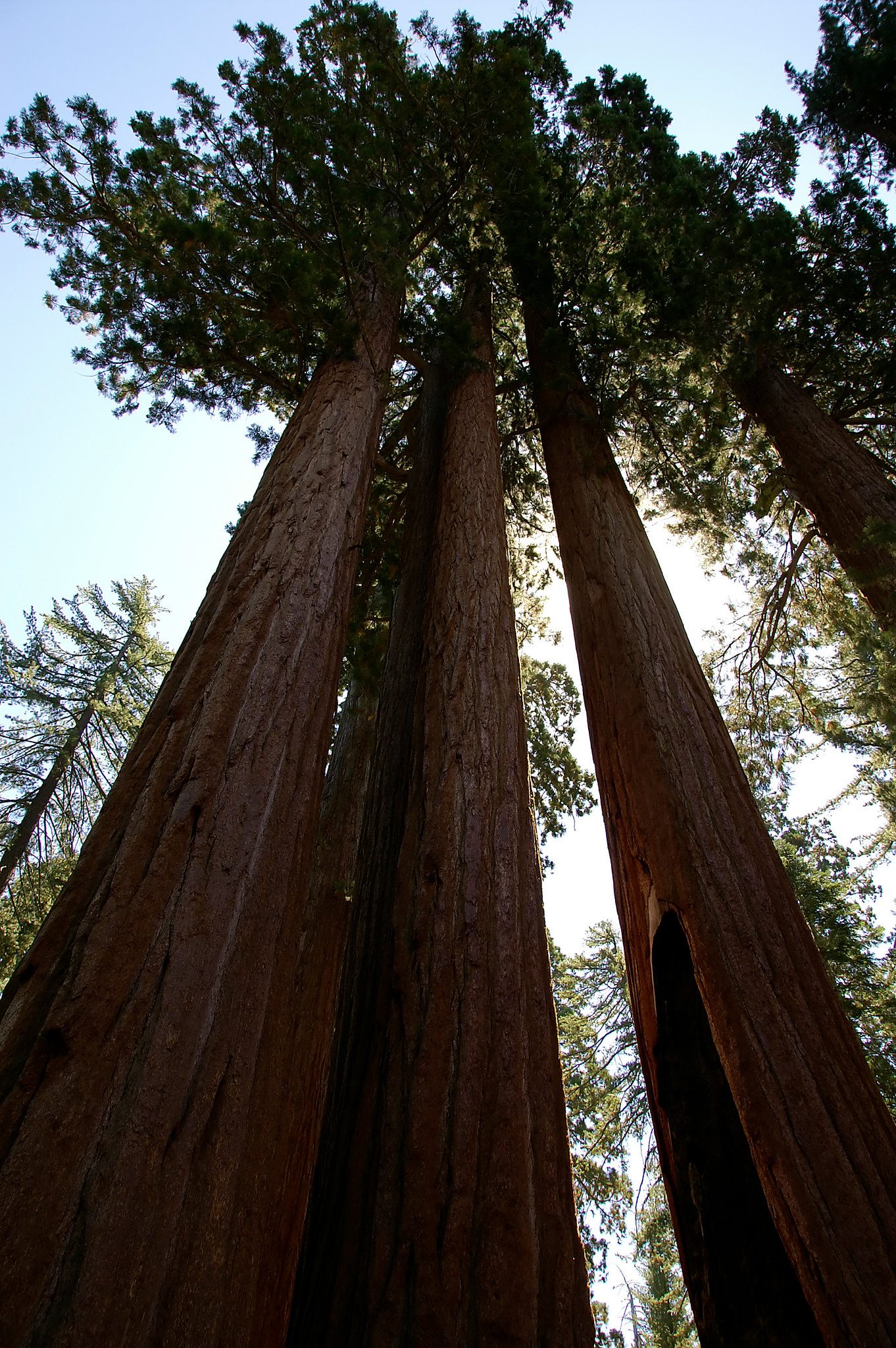
Human history
Sequoia National Park is where “Monachee” (Western Mono), Native Americans first lived. They primarily lived in the Kaweah River drainage in the Foothills area of the park. However, evidence of seasonal habitation can be found as high as the Giant Forest.
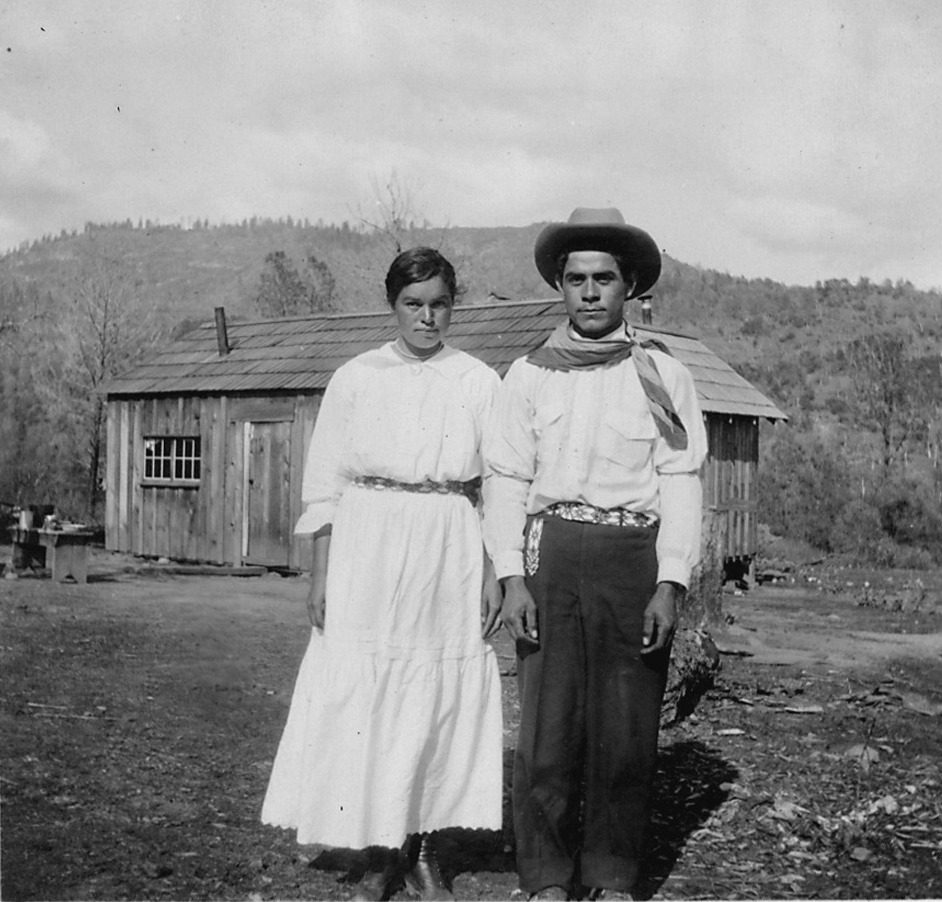
Native Americans used to travel up the mountain passes in the summer to trade with the East. Pictographs are still found in the park at Hospital Rock and Potwisha. They also contain bedrock mortars used to process acorns which was a primary food source for the Monachees.
Tharp’s Log is a cabin made from a giant, hollowed-out sequoia log.
Smallpox was already ravaging the region by the time European settlers arrived. Hale Tharp was the first European to settle in the area. He famously constructed a home from a fallen giant sequoia tree log that had been hollowed out in the Giant Forest near Log Meadow.
Tharp allowed his cattle to roam the meadow, but he also respected the beauty of the forest. He led early fights against logging in this area. John Muir would occasionally visit Tharp and stay in Tharp’s log cabin. You can still visit Tharp’s Log today, in its original location within the Giant Forest.
Tharp’s efforts to save the giant sequoias proved unsuccessful at first. The Kaweah Colony was founded by white settlers in the 1880s to seek economic success in trading Sequoia wood. Unlike their coast-redwood cousins, Giant Sequoias were found to splinter easily, making them unsuitable for timber harvesting. However, thousands of trees were eventually felled before logging was stopped.
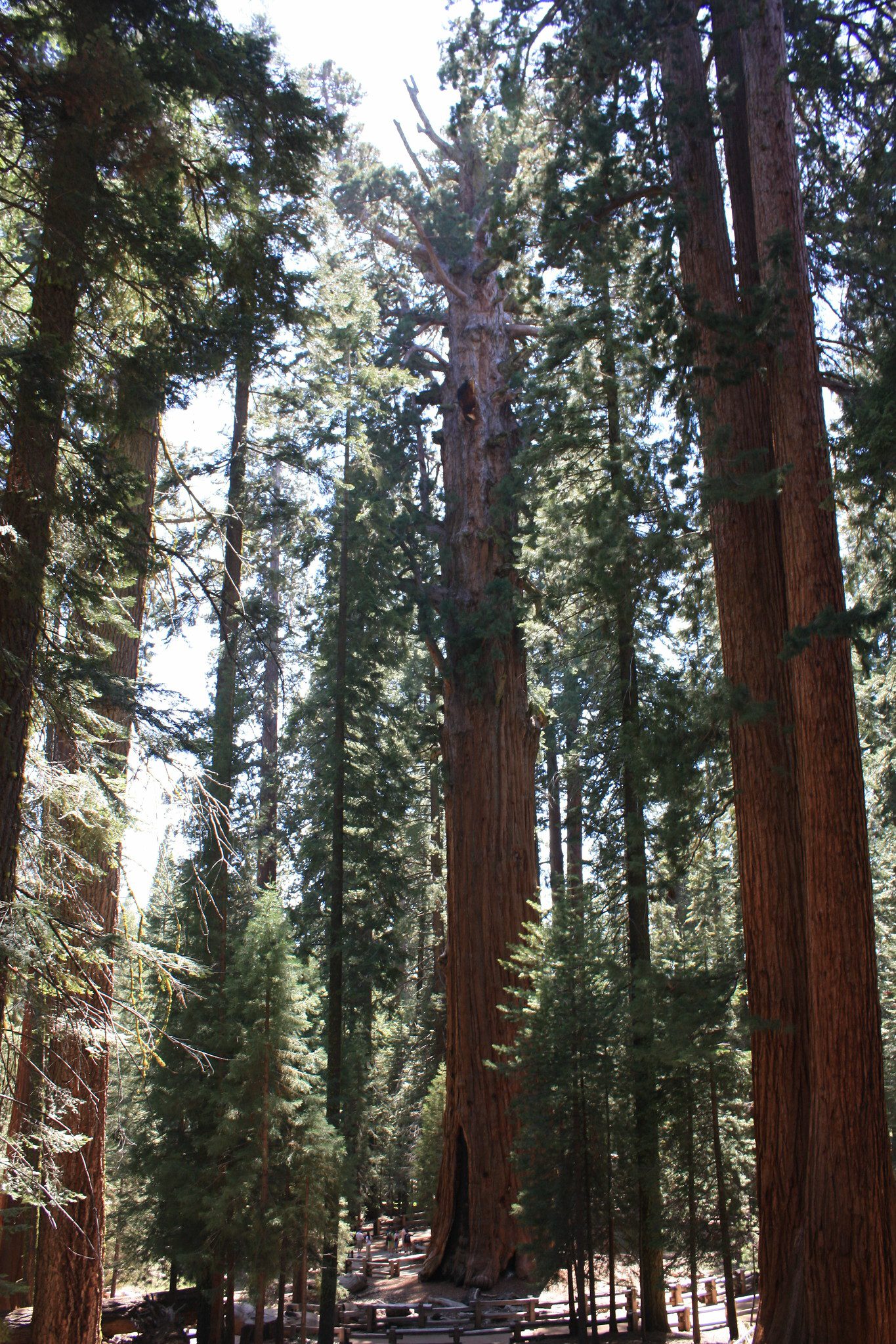
In 1890, the park was founded, and the National Park Service integrated the Giant Forest into Sequoia National Park. It also immediately stopped all logging operations in this forest. The park has been expanded many times over the years to reach its current size.
Susan Thew Parks was responsible for one of the most significant expansions, which took place in 1926.
The most recent expansion was in 1978 when the Walt Disney Corporation tried to buy a former high-alpine mining site south of the park to build a ski resort. This was stopped by grassroots efforts led by the Sierra Club. The park annexed the Mineral King site. Its name is a result of the early 1873 formation of the Mineral King Mining District. Mineral King was a popular backpacker destination.
Geology
A significant portion of the Sierra Nevada is found in Sequoia National Park. Mount Whitney, the highest mountain in the United States at 14,505 feet (4 421 m) above sea level, is part of the park’s mountainous terrain. The Great Western Divide runs parallel to the Sierran Crest.
It can be seen at several places within the park, such as Mineral King, Moro rock, and the Giant Forest. The Great Western Divide’s highest peak is at more than 12,000ft (3,700m). Deep canyons are found between the mountains.
These include Tokopah Valley, above Lodgepole, Deep Canyon, on the Marble Fork, the Kaweah River and Kern Canyon, in the park’s backcountry. Kern Canyon is more than 5,000ft (1,500m) for 30 miles (48km).
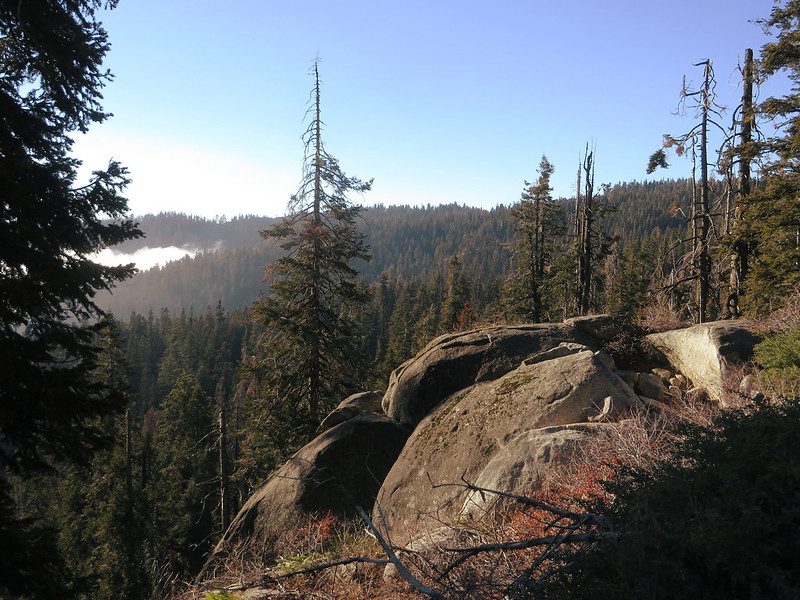
Great Western Divide at Mount Kaweah
Granitic rocks make up most of the Sierra Nevada’s mountains and canyons. Granite, diorite, and monzonite are all formed from molten rocks that cooled below the surface of the Earth. Subduction is the geologic process that creates molten rock.
Powerful forces pushed the Earth under the Pacific Ocean waters below and beneath an advancing North American continent.
As it moved upward, super-hot water from the subducting ocean floors melted rocks. This occurred during the Cretaceous Period 100 million years ago.
Granitic rocks are speckled with a salt-and-pepper appearance because they contain many minerals, including quartz, feldspars, and micas. Valhalla or the Angel Wings are prominent granitic rock cliffs that rise high above the Kaweah River’s headwaters.
The Sierra Nevada is a relatively young mountain range. It may be less than 10 million years old. The Great Basin’s development likely caused the mountains to rise. At least four ice ages have covered the mountains with a thick layer of ice over the past 10 million years.
Long periods of cold and wet weather are what cause glaciers to form. Glaciers travel slowly through mountains, creating deep valleys and craggy summits.
A landscape of hanging valleys and waterfalls has been created by the Sierra Nevada’s extensive glaciation history and the resistance to erosion of the granitic rock that makes up most of it.
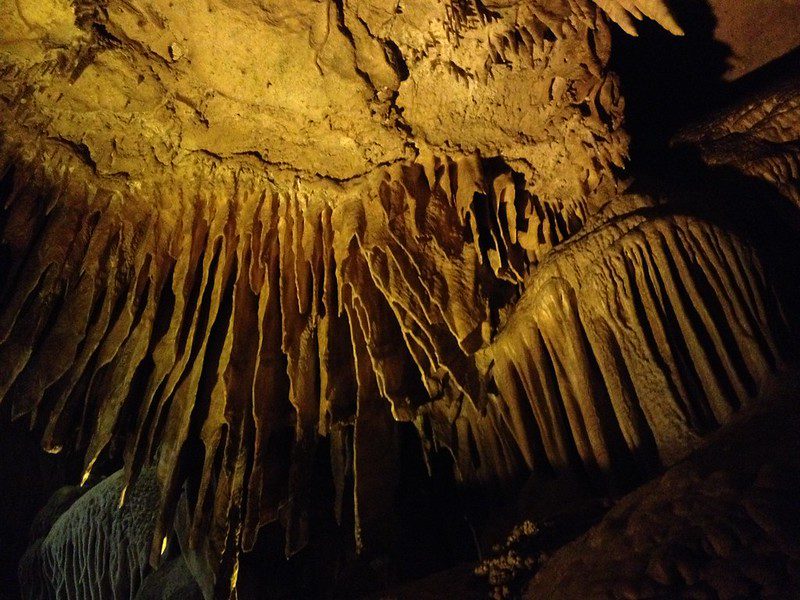
Crystal Cave contains calcite formations.
Like many caves in California’s Sierra Nevada, Park caves are primarily solutional caves made from marble. Marble rock is basically limestone, which was metamorphosed under the heat and pressure during the formation and elevation of the Sierra Nevada Batholith. Rapid uplift of the batholith over the past 10,000,000 years has led to the rapid erosion of metamorphic rocks at higher elevations. Granite beneath was exposed.
However, some caves in the Sierra Nevada can be found at elevations as high as 10,000 feet (3,000 m). The abundant seasonal streams that run through the park create these caves. Many of the more extensive caves in the park have, or had, sinking streams.
There are more than 270 caves in the park, including Lilburn Cave, California’s longest known cave. It is also home to Crystal Cave, the second-longest cave in the park at over 3.4 miles (5.5km). Alex Medley and CassiusWebster discovered Crystal Cave on April 28, 1918. This cave has a constant temperature of 48 degrees F (9 degrees Celsius) and can only be accessed by a guided tour.
Every year, caves are discovered in the park. The most recent significant cave was Ursa Minor, found in August 2006.
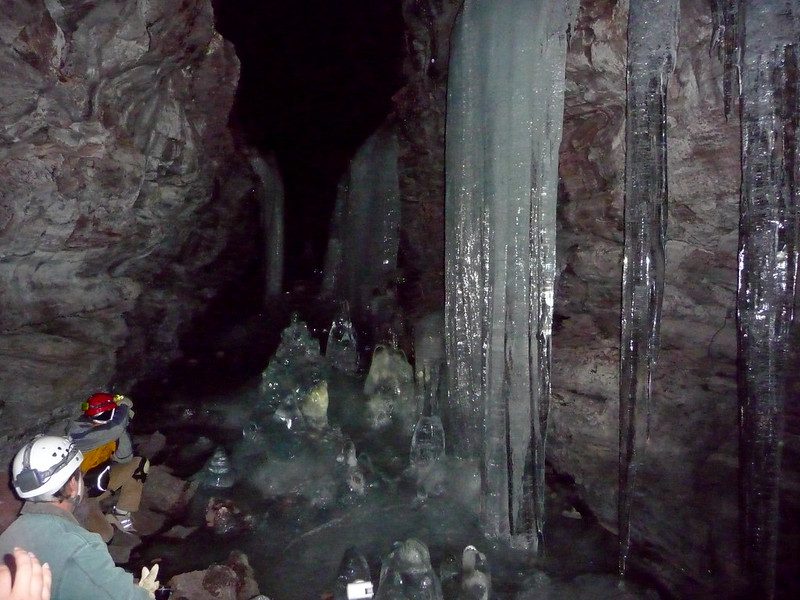
Flora and Fauna
This park is home to the following animals: badger, black bears, bighorn sheep, deer and cougars, coyote as well as badger, badger, black bear, deer, bighorn sheep, deer, fox and cougars, eleven species of woodpecker, several species of turtles, three species owls, opossums, numerous species of snake, wolverine or beaver species, and various species frog species.
Attractions in the Park
Many park visitors love to go hiking, camping, fishing, backpacking, and the following attractions:
- Sherman Tree Trail. A paved trail of 0.8 miles runs from the parking lot to the General Sherman tree. It winds through a forest of giant sequoias trees.
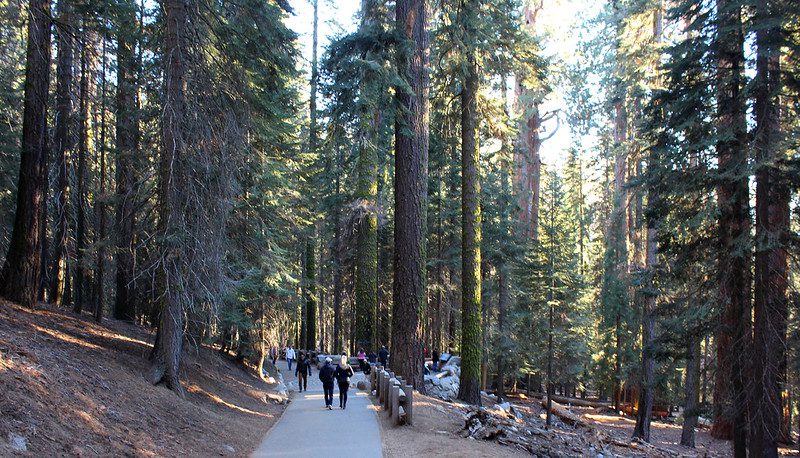
- Tunnel Log is the fallen giant sequoia in Sequoia National Park. Natural causes caused the tree to fall across a park road in 1937. It was 275 feet tall (84m) and 21 feet (6.4m) wide. A crew made the trunk passable again by cutting an 8-foot (2.4 m) high, 17-foot (5.2 m) wide tunnel.
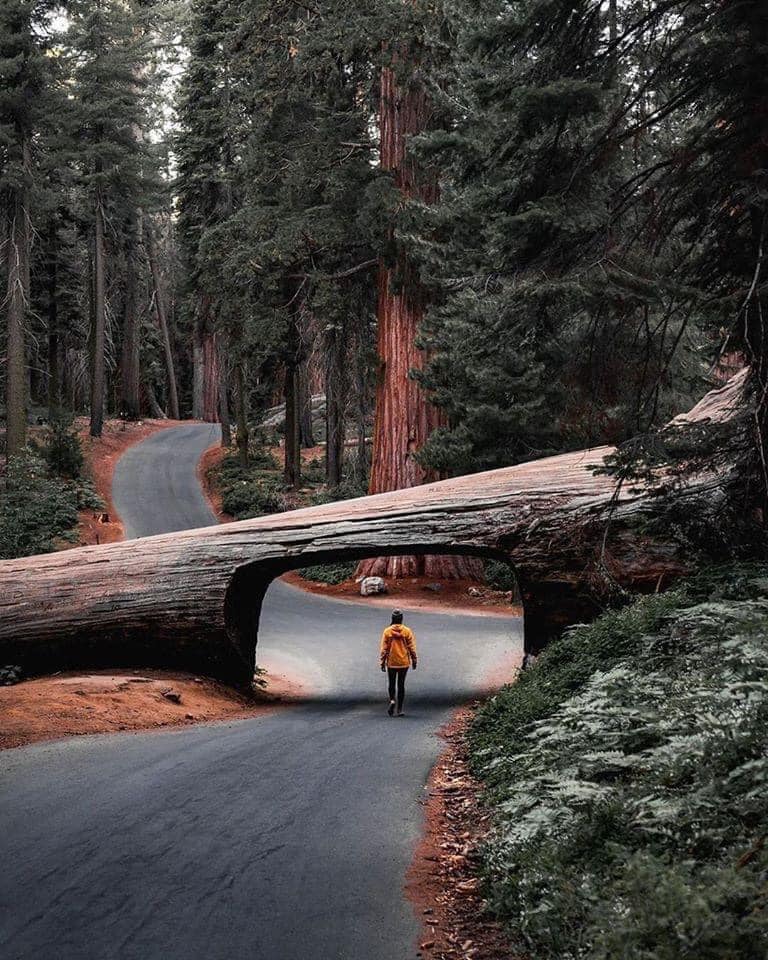
- Tokopah Falls. Tokopah falls are found just beyond the Marble Fork Bridge at Lodgepole Campground. It takes only 1.7 miles to walk along the Marble Fork, Kaweah River to reach the granite cliffs of Tokopah Canyon. Tokopah Falls, which is 1,200 feet (368.8 meters) tall, is the highest point in the area. It is best seen in early summer.
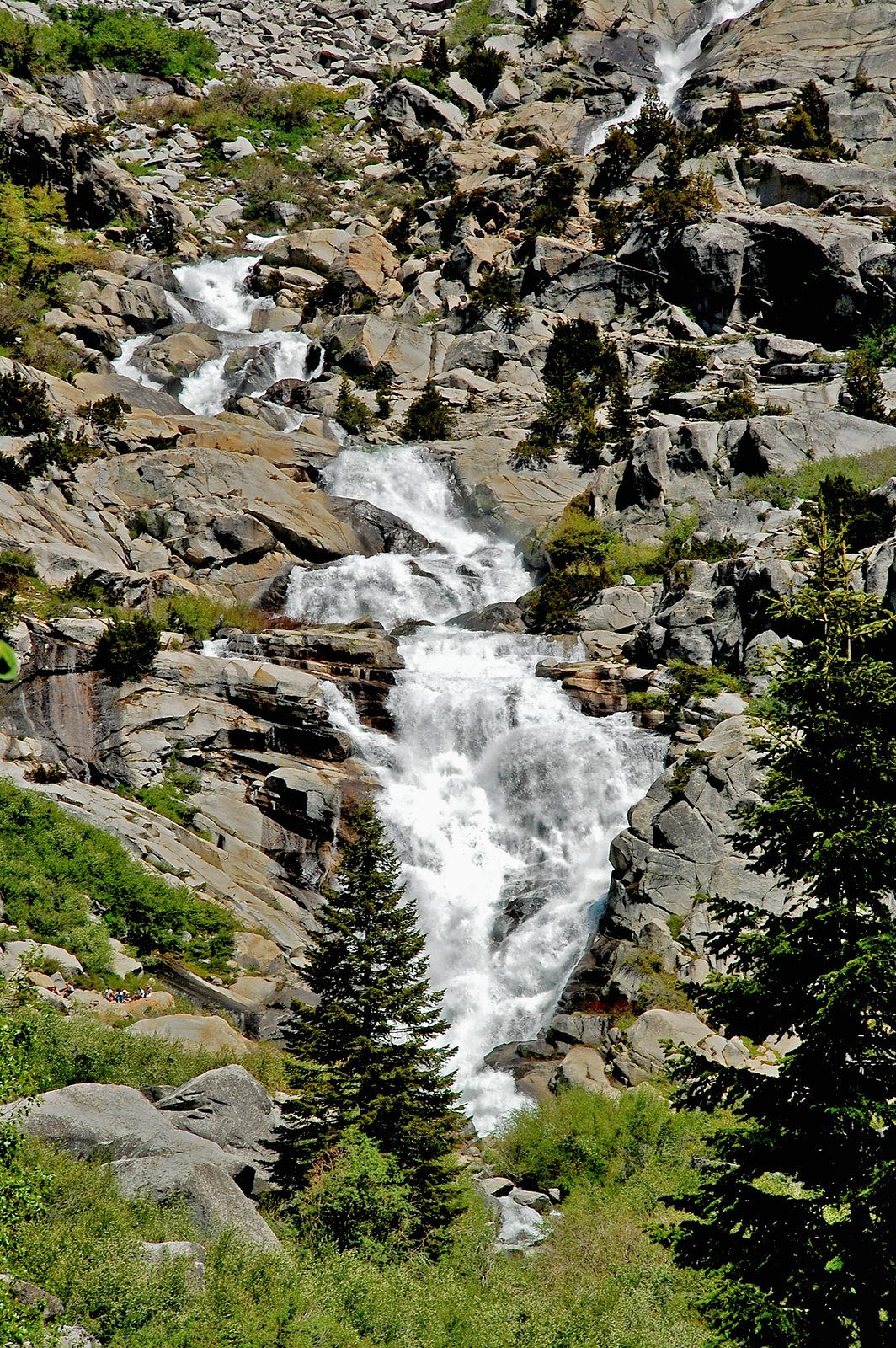
- Crescent Meadows is an area of small-sized, sequoia-rimmed meadow located in the Giant Forest section of Sequoia national park. This Sierran meadow is the western terminus for the High Sierra Trail. It stretches across the Great Western Divide and Mount Whitney. This meadow and the Log Meadow were homesteaded by Pioneer Hale Tharp. John Muir, a conservationist, visited the meadow several times and called it the “Gem of the Sierra”. The meadow is located at the end of a three-mile-long paved road that runs from the General’s Highway to the Giant Forest Museum.
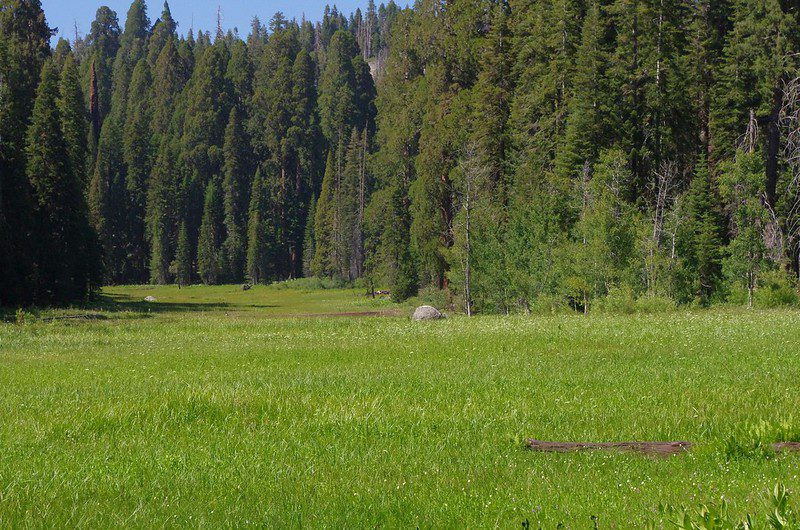
- Moro Rock is an iconic granite dome found in the middle of the park at the head of Moro Creek. It is located between Crescent Meadow and Giant Forest. The Civilian Conservation Corps built a 351-step stairway in the 1930s. It was poured onto the rock to allow visitors to climb up the mountain. The National Register of Historic Places lists the stairway. The rock offers a panoramic view of much of the park, including the Great Western Divide. It is 6,725 feet high (2,050m).
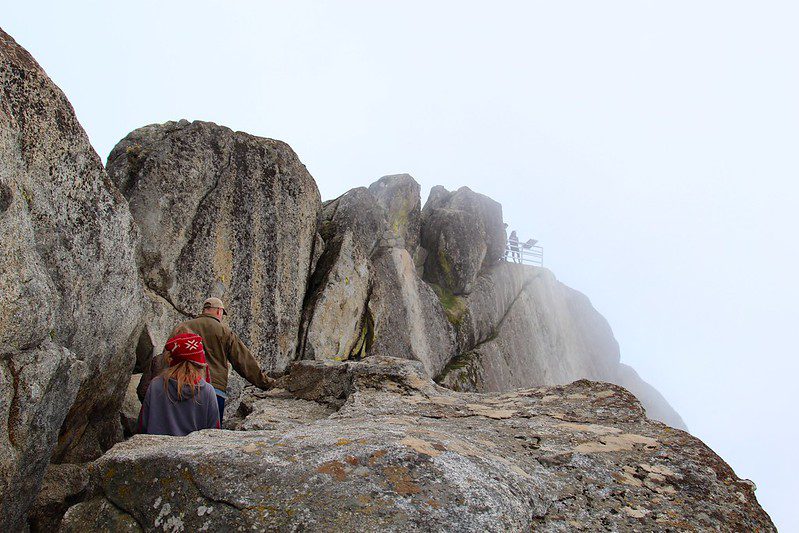
- Campgrounds in this park include three located in the foothills: Potwisha (42 locations), Buckeye Flat (28) and South Fork (10). Four campgrounds can be found at higher elevations with conifer-dominated vegetation, from 6,650 feet to 7,500ft (2,000 to 2,300m), including Atwell Mill (21 campsites), Cold Springs (40), Lodgepole (221 sites), and Dorst Creek (204)
- Giant Forest Museum provides information about giant sequoias as well as the history of humans in the forest. Gilbert Stanley Underwood, an architect, built the historical museum in 1928.
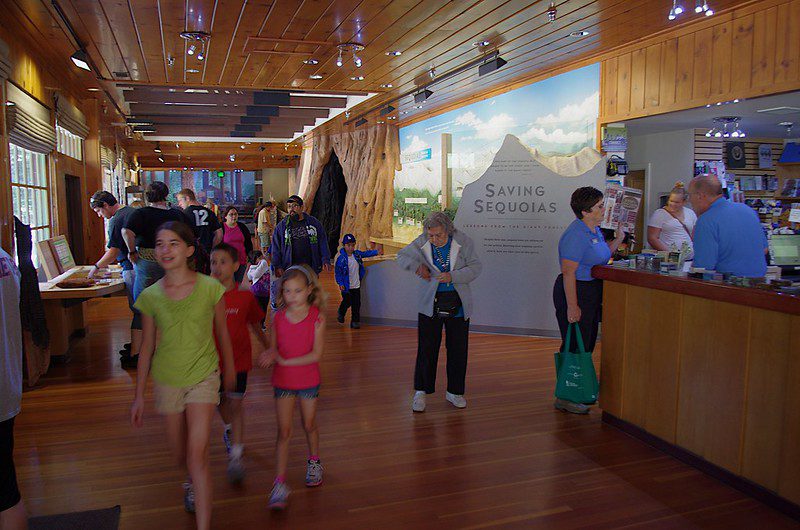
Hotels near General Sherman Tree
The General Sherman Tree is the largest living tree on Earth. The giant sequoia is over 275 feet (84 meters) tall, and its trunk is almost 40 feet (12 meters) in diameter. The tree is located in Sequoia National Park in California.
There are several hotels near the General Sherman Tree. The Wuksachi Lodge is the closest, just a quarter mile away. The lodge has a restaurant, bar, and gift shop, and offers ranger-led programs. Other nearby hotels include the Shenandoah Lodge and the John Muir Lodge. All of these lodges are within walking distance of the General Sherman Tree.
General Sherman tree altitude
The General Sherman tree is the largest tree in the world. It is a giant sequoia that is located in Sequoia National Park in California. The tree is thought to be between 2,300 and 2,700 years old. It is about 275 feet tall and 100 feet in circumference.
General Sherman tree comparison
There are many different ways to compare the General Sherman tree to other trees. One way is by its height. The General Sherman tree is the tallest tree in the world, measuring 275 feet. Other trees, such as the coast redwood and the sequoia, can measure up to 380 feet tall.
Another way to compare the General Sherman tree is by its age. The General Sherman tree is around 2,300 years old, whereas other trees such as the bristlecone pine can live to be over 5,000 years old.
Finally, another way to compare the General Sherman tree is by its size. The General Sherman tree is the largest living thing on Earth by volume, measuring 52,508 cubic feet. There are other trees that are larger by mass or width, but none that are larger by volume.
Redwood National Park
Redwood National Park is home to the world’s largest tree, the General Sherman Tree. The tree is over 2,000 years old and is still growing! The park is also home to many other giant redwoods, some of which are over 3,000 years old. These trees are truly amazing and awe-inspiring.
People Also Ask
Which month is best to visit Sequoia National Park
When the weather is most stable, June to August is the best time to visit Sequoia National Park. Although the park is open all year, there are some challenges in certain seasons. To safely navigate the park roads in winter, you will need snow chains or tires.
In which state is Sequoia National Park?
California, Sequoia National Park/State
Sequoia National Park is a forested area covering 629 sq miles (1,629 km) in the Sierra Nevada in east-central California. The U.S. borders it to the northwest and north with Kings Canyon National Park and Mount Whitney on the eastern border (14,494 feet [4,418 meters]).
Is the General Sherman Tree still growing?
The General Sherman Tree is 103/31 meters in diameter and rises 275ft/84m into the Sierra blue sky. It’s still growing. Every year it adds enough wood to make another 60-foot/18-meter-tall tree.
Did the General Sherman Tree ever fall?
A large branch was lost by the tree during a severe winter storm in 2006. It fell on the fence, causing damage to the walkway and pavement around the sequoia. The branch’s loss is considered a natural defence mechanism against adverse weather conditions.
Is General Sherman the oldest tree on the planet?
The Great Basin Bristlecone pine (Pinus Longaeva) is the oldest tree known to exist, having reached an age of more than 5,000 years. It is the harsh environment it lives in that has allowed Bristlecone pines to live long and healthy life.









































